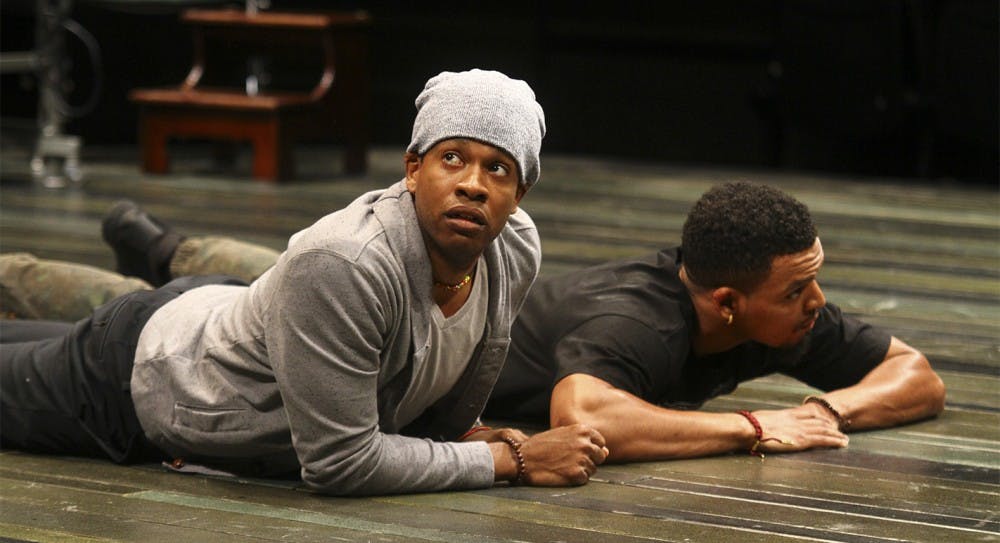Uncomfortable. Powerful. Unpredictable. Necessary.
These are just some of the words that come to mind after watching PlayMakers Repertory Company’s newest play, “We Are Proud to Present a Presentation About the Herero of Namibia, Formerly Known as South West Africa, From the German Südwestafrika, Between the Years 1884-1915.” The play, directed by Desdemona Chiang, had its opening night Saturday in the Paul Green Theatre and will have performances continuing until March 13.
The show is insightful and raw, full of symbolism and depth. What begins as slow-paced and lighthearted quickly gains tempo and explores dangerous territory. There are six characters, who are defined solely by their race and gender: White Man, Another White Man, Black Man, Another Black Man, Black Woman and White Woman.
A play within a play, the characters are trying to figure out how to tell the story of the Herero tribe of southwest Africa that was colonized by Germany. Their first source of direction comes from letters written by a German soldier to his girlfriend, whom they call Sarah. The letters, mainly talking about simple things, offer only one perspective — a white male in power. The letters don’t speak about about the violence occurring. At one point while he is shooting a Herero man, White Man is talking to Sarah about the weather.
The play within a play is inspired by Black Woman flipping through a magazine one day and seeing a woman who resembled her grandmother. The article was about the Herero people and the genocide that occurred at the hands of the German military. She immediately felt a connection, and although the woman was not her actual grandmother, she still felt inspired to bring her story to life. This, along with other dialogue throughout the play, touch on the issue that many African Americans have with wanting to connect with their African roots but not knowing where to start because lack of available records.
As the play progresses, the actors begin tapping into what they feel their characters would be doing in certain situations, meaning part of their actions are coming from certain biases they have hidden within themselves. It is subtly done, but the setting also changes from late-19th century South Africa to late-19th century southern United States.
The work ends with one of its most moving and impactful scenes. Not only because of the silence ending the play — which allowed the characters to react to what they just did — but sniffles were heard throughout the room as the audience processed what they saw.
This play is uncomfortable. It mirrors the real-life dialogue we often see around race. It’s powerful because it’s not only tackling these issues in a dramatic form, but it’s subliminally forcing the audience to become involved and think about their own conversations about race. It’s unpredictable because, as an audience member, you aren’t prepared for how hard you will be pushed emotionally and mentally.
And it’s necessary — it simply needs to be seen.
@hotbeansmorgan
arts@dailytarheel.com
To get the day's news and headlines in your inbox each morning, sign up for our email newsletters.





